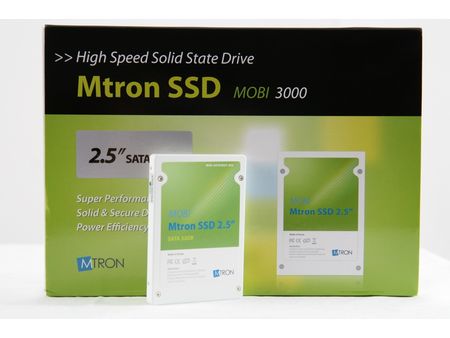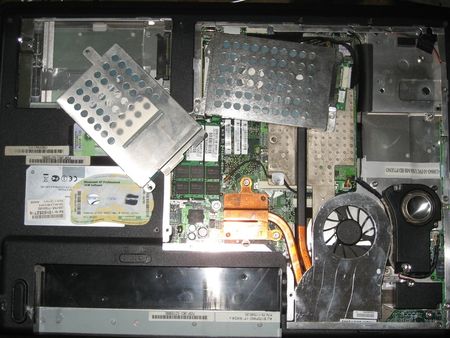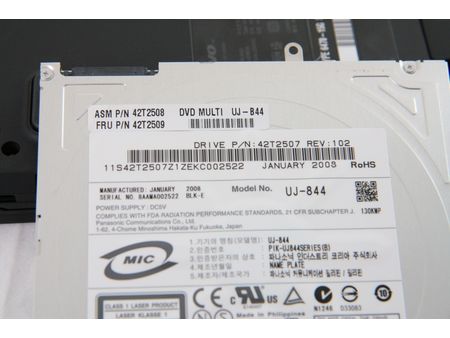Install A Solid State Drive In Your Notebook
Three Options For Installing A Hard Disk In Your Notebook
Solid-State Drives (SSDs) are becoming more and more popular, especially for storing operating systems and programs, but they have two big drawbacks. The first is the price. But an even bigger one is their capacity. A lot of people are willing to shell out a lot of money for a faster machine, but not many are willing to settle for just 16 or 32 GB more storage space, even in a notebook.
In this article we’ll explain how to install an SSD in your notebook computer, while retaining a hard disk for storing data.
There are several methods for installing a hard disk in a notebook, some simpler than others. Let’s look at the various possibilities.
Notebooks With Multiple HDD Slots: The Easiest
The simplest solution is to buy a notebook that has space for two (or three) hard disks. Most models with 17" or larger displays fall into this category. With a computer like this, installing both an SSD and a hard disk is no problem. All you do is install each one in a different slot. Be careful, because certain computers (like the 17" MacBook Pro) have only a single slot.
Notebooks With Drive Bays: A Good Choice
The second solution is fairly common with certain manufacturers and involves using a bay to hold a second hard disk. The bay concept is fairly simple: The optical drive is removable and can be replaced with accessories such as a second battery, an empty module for weight, or a hard disk. Lenovo, Dell, and Toshiba, for example, fit some of their machines with this type of accessory. It’s an easy system to use – you just remove the case containing the optical drive and insert one that contains a hard disk.
There are two possible problems. Optical drives are often in ATA format – which requires that you use an ATA hard disk – and cases are not always easy to find. Prices are usually moderate – between $47 and $94 for a model that can take a hard disk. Be careful, because some subnotebooks, such as the Lenovo X300, have a bay but won’t take a hard disk because they’re too thin.
Our Solution: Do It Yourself
Our solution is less elegant, but just as effective: We replaced the optical drive with a hard disk. Read on to see how we solved the problems associated with this approach.
Get Tom's Hardware's best news and in-depth reviews, straight to your inbox.
Current page: Three Options For Installing A Hard Disk In Your Notebook
Next Page A Less Elegant, But Effective Solution-
Is there something about that lenovo adapter that's special to lenovo laptops? Is it not a standard ata adapter with a standard form factor?Reply
-
FHDelux I dont usually leave comments, but this article has no point. Anyone interested in an SSD, knows how fast it is and how to put one in a laptop. Also, why all of the sudden is this site being mucked up with rediculous MAC stuff. I could care less how fast a MAC boots up, its useless anyway. I come here to read about real computers, not, ooooo its pretty i wanna buy it cause it has a catchy theme song on the commercial computers.Reply -
nukemaster What ever boost they got on there mac. You would get on your pc as well..Reply
Hell my photo shop still opens faster(within a second of the SSD times). But Quad + Raid will do that.
What machine they use does not matter much. I do agree they may as well of just slapped it into one of there windows notebooks first since its not too hard to do and then they could get some benches for that, but the speed boosts should be about the same on either OS.
Any day they gut hardware for upgrades(Even if its a mac) is fine with me -
palach I think it's more interesting to show what is the battery time gain by installing the SSD compared to the normal HDD in this or other laptops, since most people will take the laptop to a certified technical support if they want to install a new HDD or SSD.Reply -
TeaCup In response to FHDelux, I used to be annoyed by everything Apple/Macintosh, until I actually got to use one. Strangely enough; my Macbook Pro is literally the most stable and capable WINDOWS system I've ever owned. I run Windows XP only, and everything works flawlessly. It's practically silent, and has better battery life than any other laptop I've owned. So you're a bit behind the times bashing the apple system they used. Great article btw.Reply -
laxmidd50 I think most people who know what a SSD is are capable of installing one themselves.Reply -
boogman What's with all this "ATA drives not compatible"???Reply
SATA is ATA.
PATA is also ATA.
Sigh... -
bobloadmire i find it funny that my Vista desktop launches word and photoshop froma cold bott in about half the time the SSD mac pro does.But yeah ssd's FTWReply -
bobloadmire i find it funny that my Vista desktop launches word and photoshop from a cold boot in about half the time the SSD mac pro does. But yeah ssd's FTWReply



